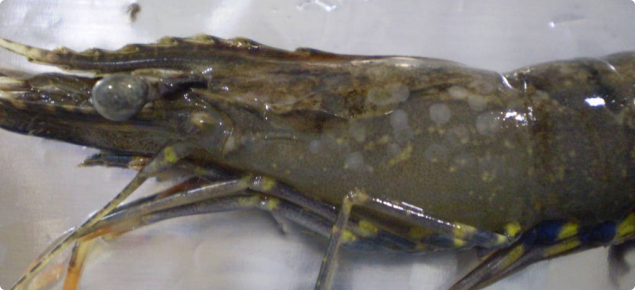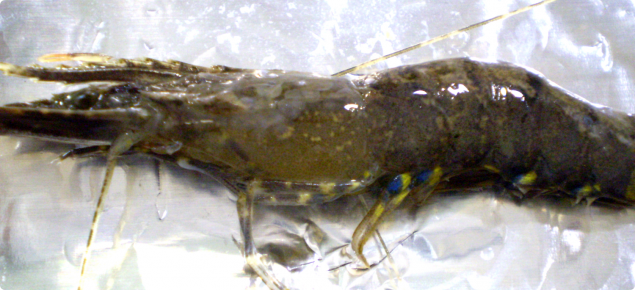White spot disease images courtesy of Queensland Department of Agriculture and Fisheries.
Preventing entry of white spot disease to Western Australia
| Update following February 2023 detection of white spot disease in New South Wales |
|---|
| In August 2022 and February 2023, white spot disease was detected in prawn farms in NSW and actions have been undertaken to eradicate it from the farms. WA has implemented enhanced precautionary import restrictions for live or uncooked crustaceans or parts of crustaceans from certain areas of NSW, and uncooked bait prawns and polychaete worms from all of NSW. These restrictions will remain in place while the situation is being investigated and further disease surveillance and testing are undertaken. |
White spot disease was first detected on prawn farms in Queensland in 2016 and recurred in April 2020, and has become established in the wild in a restriction area in Queensland. White spot disease was detected in prawn farms in New South Wales in August 2022 and February 2023.
White spot disease is not present in WA, so restrictions apply to imports of:
- live or uncooked wild-caught crustaceans or parts of crustaceans from areas of Queensland and New South Wales
- uncooked bait prawns from all of NSW waters
- uncooked polychaete worms from areas of Queensland and all of NSW, and
- prawns produced by aquaculture in Queensland or NSW.
The import of any crustaceans including prawns, parts of prawns or polychaete worms must be compliant with current WA import requirements (search the Quarantine WA import requirements) under the Biosecurity and Agriculture Management Act 2007.
To prevent potential spread of white spot disease to WA:
- Follow WA import requirements.
- Do not use raw prawns meant for human consumption as bait.
- Do not dispose of crustacean waste (e.g. heads and shells) in or near waterways.
Note: Thorough cooking destroys the white spot virus. Freezing does not destroy the virus.
Report disease signs in prawns
Prawns with white spot disease may have a loose shell with numerous white spots (0.5-2.0mm in diameter) on the inside surface of the shell and a pink to red discolouration. Prawns may have high death levels, may come to the edge or water surface or demonstrate unusual swimming patterns.
See the Outbreak website for further disease identification information.
Recreational fishers are encouraged to check their bait for signs of white spot.
If you think you have found or seen white spot:
- Photograph it – from different angles and the bag the prawns were purchased in.
- Record it – make a note of when and where you purchased the prawns including the producer’s name, the trade or common name of the prawns and where the prawns came from.
- Collect it – keep the whole bag of prawns and refrigerate or freeze it and do not use it as bait.
- Report it – report unusual signs of aquatic diseases, including signs in bait, to the FishWatch 24-hour hotline on 1800 815 507.
Note that frozen prawns may have white spots caused by salt crystallisation or freezer burn. White spot disease can only be diagnosed via appropriate laboratory testing.
Impacts of white spot disease
A widespread outbreak of white spot would have a significant impact on the Australian aquaculture industry as well as trade implications and environmental and social impacts.
In prawn farm operations white spot can result in 100% mortality within a few days of the onset of visible signs of the disease.
White spot could pose a serious threat to WA’s freshwater and marine crustaceans in both farmed and wild fisheries including crabs, lobster and marron.
White spot disease does not affect fish or other marine animals. This disease does not pose a threat to human health or food safety.
WA import requirements
WA has import requirements in place for crustaceans of the order Decapoda (including but not limited to lobster, crayfish, prawns, shrimp, crabs, Moreton Bay bugs and yabbies) and polychaete worms of the class Polychaeta. The current WA import requirements can be obtained from the Quarantine WA Import Requirements Search.
More information
For further information on importing organisms and potential carriers into WA from other Australian States or Territories, please:
- visit the Quarantine WA import restrictions webpage or
- contact the Quarantine WA team on +61 (0)8 9334 1800 or
- email qwa.import@dpird.wa.gov.au.
For more information about white spot disease, see:




